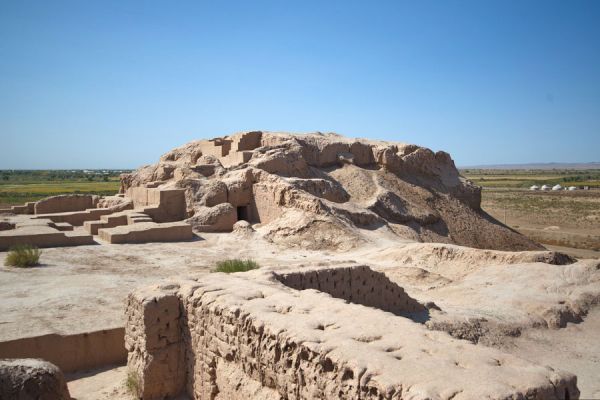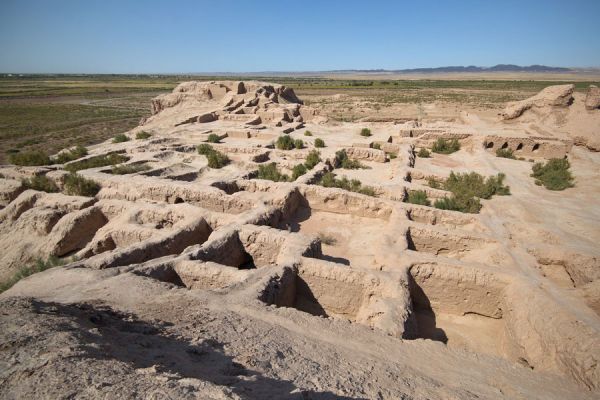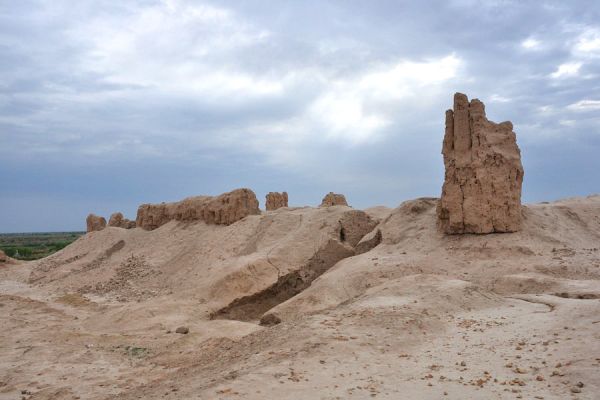Toprak-kala settlement
In the old days, wherever a traveler steered his horse, the battlements of the oncoming fortress cities were the first to rise in his path. To this day, only the ruins buried under the sands and the crumbled remains of the walls have survived. Perhaps the most impressive are the majestic ruins of the ancient fortified capital of ancient Khorezm, known today as Toprak-kala. The appearance of the settlement dates back to the beginning of the 1st millennium AD. Located in the Ellikkalinsky district of Karakalpakstan on an area of more than seventeen hectares, it was surrounded by powerful mud brick walls with numerous towers. Lancet loopholes cut through the fortress walls, topped with merlons. The main highway crossed the city from the entrance gate along the axis, and cross streets ran perpendicular from it.
A large fire temple with a sanctuary and a square were located in the northern part of Toprak Kala. To the northwest rose the mighty strongholds of the palace-castle of the Khorezm shahs, one of the most outstanding architectural structures of Eastern antiquity. The palace was built in the II century on a high plinth and dominated the rest of the buildings. Three huge square towers towered above it. The massive palace walls were dismembered by pilasters.
Archaeologists have extracted from the ruins and restored the general contours of the layout of the residence of the rulers of Khorezm. The palace had more than a hundred rooms – large halls, a suite of small rooms, residential apartments and courtyards. There was also an archive, storerooms and workshops. The main halls, separated from other rooms by arched openings, one after another revealed beautifully decorated interiors to the eyes of visitors. In these rooms, statues and high-reliefs depicting kings and queens, court dignitaries, patron gods and armed dark-skinned and red-skinned warriors, as if guarding the ruler of Khorezm, were located on elevations along the walls.
In the so-called Victory Hall, the tsar sat on an ottoman, on both sides of which were placed soaring allegorical female figures in long flowing draperies. All the sculptural compositions of Toprak-kala were made of baked clay or plaster and painted, which gave them emotionality and expressiveness.
The interior of the palace was striking in its colorfulness. There are many fragments of wall paintings preserved in it. The paintings of some of the vast halls are distinguished by a hot range of crimson-red tones, in others the profile of an elegant lady with an intricate hairstyle and rich jewelry, as well as a musician playing the harp, and the image of a young scribe carrying scrolls on a tray are preserved on a light background.
Unlike the state halls, several rooms in the western part of the palace were obviously intended for more modest receptions and, accordingly, their decorative decoration was not so solemn. So, in the Red Hall, the silhouette of a tiger, the owner of the riverine tugai, is clearly visible. In another room, high-relief images of deer framed by vines and pomegranate trees were sculpted.
The Toprak-Kala hillfort with the Khorezmshah palace is one of the oldest secular structures in Central Asia and is included in the UNESCO list of world cultural monuments.




















